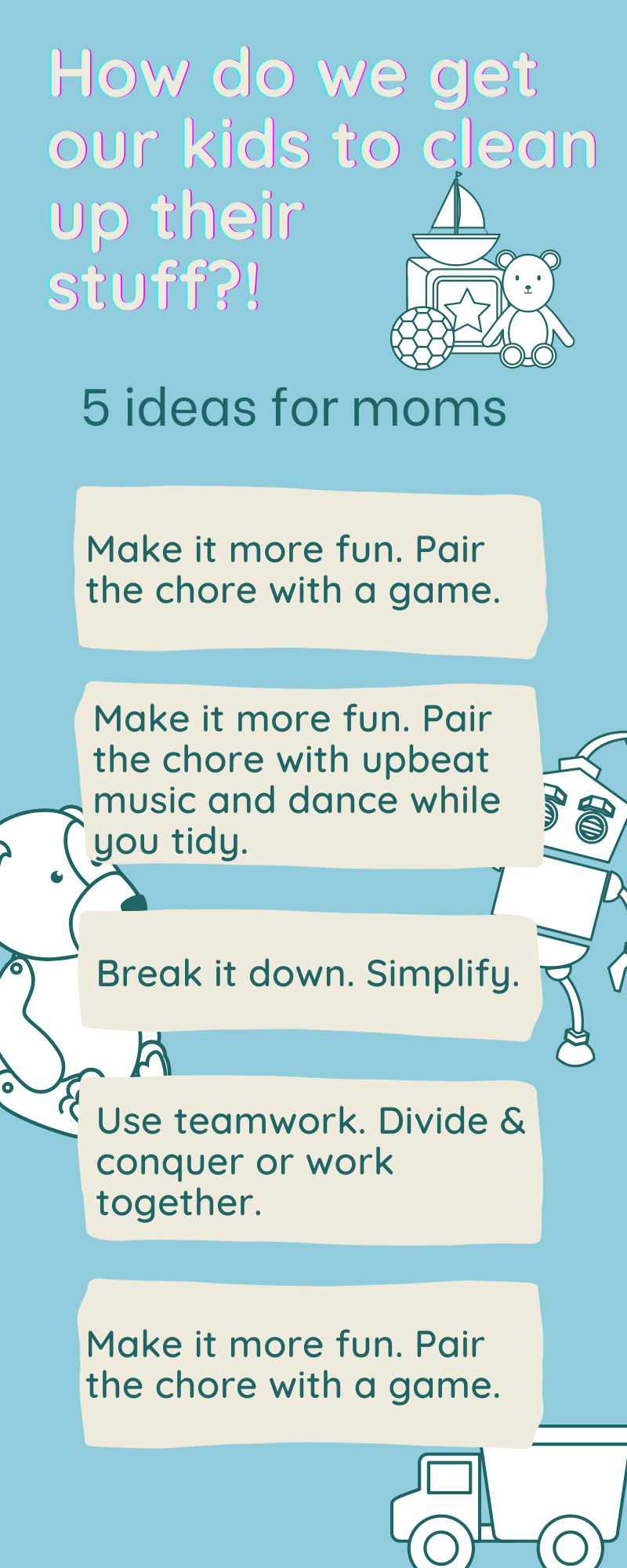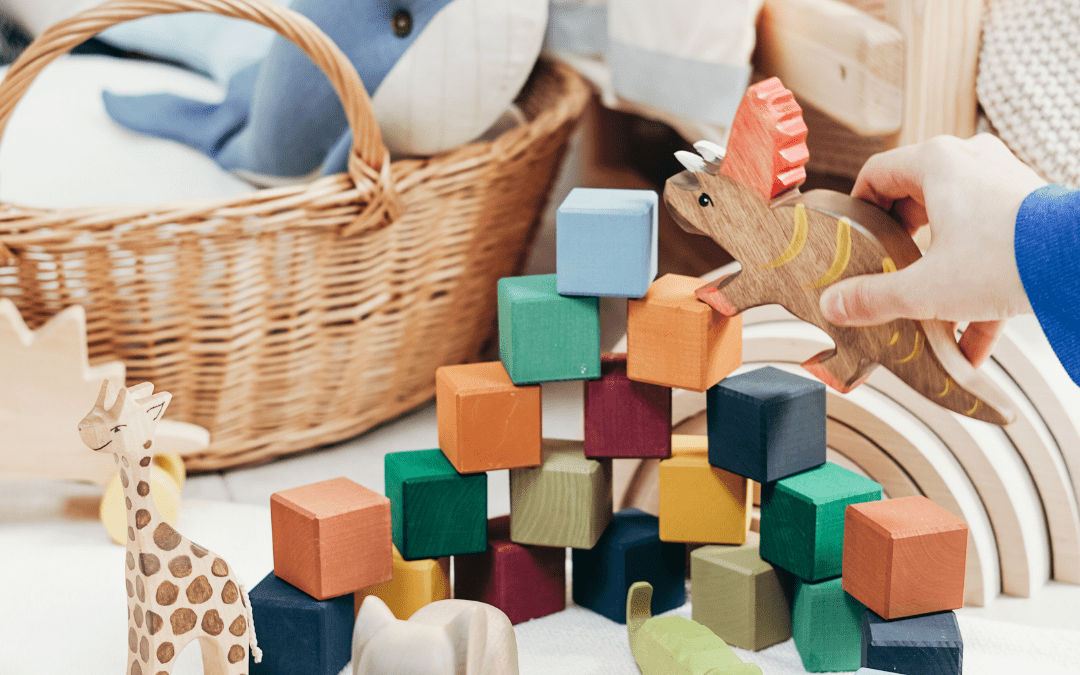Clean up your room! Why is it so hard for our kids to do this? We just want you to clean up your room. That’s it, kids! It’s not that hard!
I was working with an amazing mom during a parent coaching session. She was stressed and exhausted- you know, like most moms these days. We were trying to pinpoint any specific areas of stress that we could tackle first. She just wanted a tidy house. Not perfect, not spotless, just tidy. For her, the calmer physical space would help her to feel calmer.
But she had asked her 3 kids over and over and over to tidy up their space, to clean up their toys. She had a dedicated playroom and the kids could just make sure the toys ended up in the right room. She wasn’t even asking them to put them away in bins or organize the toys. Just get the toys that have wandered all over the house and put them back in the playroom.
But here we were talking about how that wasn’t working. When she asked her to kids to clean up it turned into a power struggle and nothing really got done. She was tired of the mess, tired of her kids not listening, tired of the disrespect she felt at her simple tidy-up requests being ignored.
Here is where we brainstormed some ideas of how to make this process go smoothly and she chose the ideas that were the best fit for her family.
Ideas to get kids to clean up with less complaints
Our ideas to help make tidying up the house easier for the family:
- Make it more fun. Pair the chore with a game. Race against the timer to see if you can get one room done in 5 minutes or less! Be careful that racing against other family members can make a competition you’re not looking to deal with at this time. Work together as a team to race against a stopwatch or timer instead.
- Make it more fun. Pair the chore with upbeat music and dance while you tidy. Tell Alexa or Google to crank up the jams and get busy. But if your child is too distracted by the music, maybe skip this idea and choose something else. You can also choose instrumental music to minimize the distraction of stopping to sing along dramatically.
- Break it down. Go clean your room is a big task if the room is a disaster. Make it smaller- go pick up all the shoes. Go pick up just the lego. Get all the Barbies and put them in this basket. Pick up your dirty clothes and put them in the hamper. You can make (or find online) a checklist of the steps to tidy up the room. You can just look at it with your own eyes and simplify your verbal instructions. You don’t have to get fancy with visual schedules all the time. You do need to find instructions that work. Go clean your room is too broad. Simplify. Break it down.
- Use teamwork. One child picks up the toys that are on the floor and puts them back in the toy area/ playroom. Another child picks up toys that are on furniture all over the house and puts them back in the play area. Each child only has to do half the work and they have a very clear task.
- Use baskets or buckets. If your child carries toys all over the place, then put a laundry basket, toy bin, some sort of bucket in the living room and the instruction is now to put all the stuff that needs to go back to the playroom in the basket. Less walking around to find where things go while tidying up- less distraction. Then you all take the basket to the toy area together and work to get things put away- right there close by.

The mom I was working with used numbers 4 and 5 together. She just wanted the main living areas tidied up at the end of each day. So she got a basket from the playroom and simply had one child do the floor, the other does surface. They didn’t have to walk all the way to the playroom right then. They just had to get the stuff into a basket. Then together they could unload the basket in the playroom.
This one simple tidy-up hack helped this amazing mom to be able to move on to the harder things she was working on with her kids. But the mess everywhere combined with the stress of the power struggle to clean up the mess had been getting in her way and stressing her out. It got easier. Less arguments with her kids meant more time talking about what matters- things like sibling kindness, gratitude, and finding ways to really connect.
During a parent coaching session, we brainstormed 5 ideas all backed by the science of behavior. Did this mom need all 5? No. Would using all 5 at the same time be a good idea? No. Break it down for yourself. Choose 1 or 2 simple behavior tools to make life easier. Don’t create extra work for yourself! We’re trying to save your sanity with simple tools. What works best for your family is not what works best next door or at my house. Is this list of 5 tools complete? No. There are many more ways to use positive reinforcement to help make things go smoother at home. Learn lots more on my blog, in my books, or set up your own coaching call. Stick with the science of behavior and find the right combination of positive tools that work at your house.
Which one of these 5 are you going to try today? What others would you add to this list?

Recent Comments